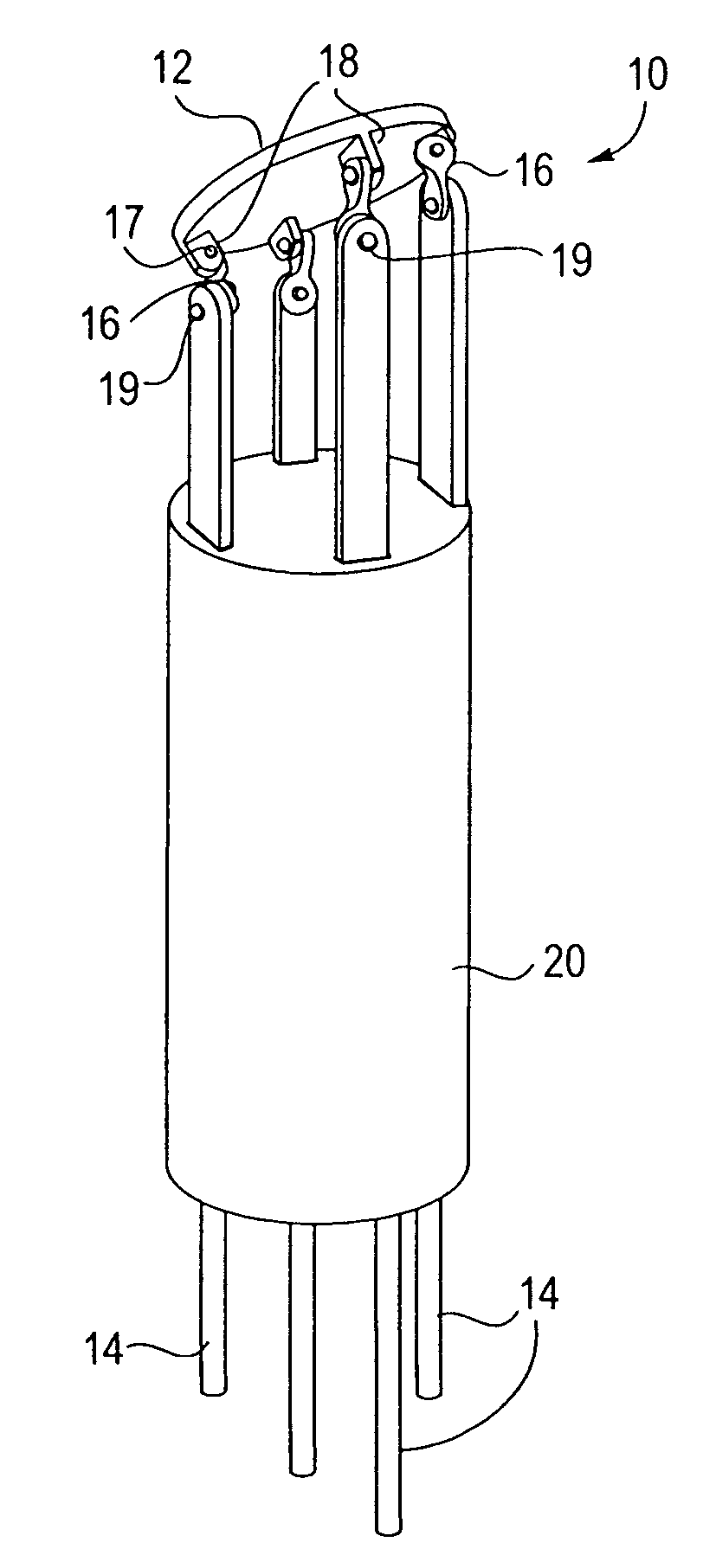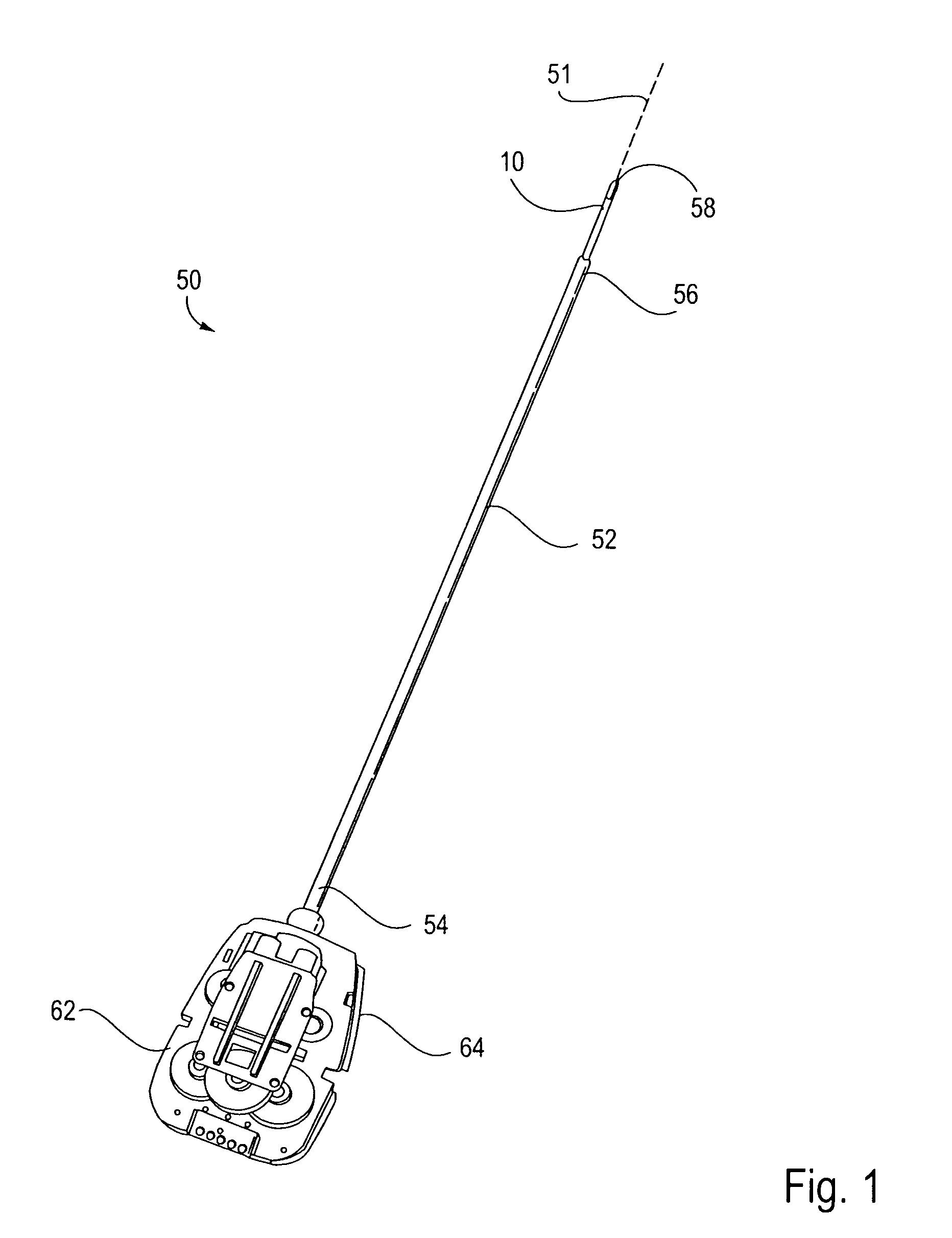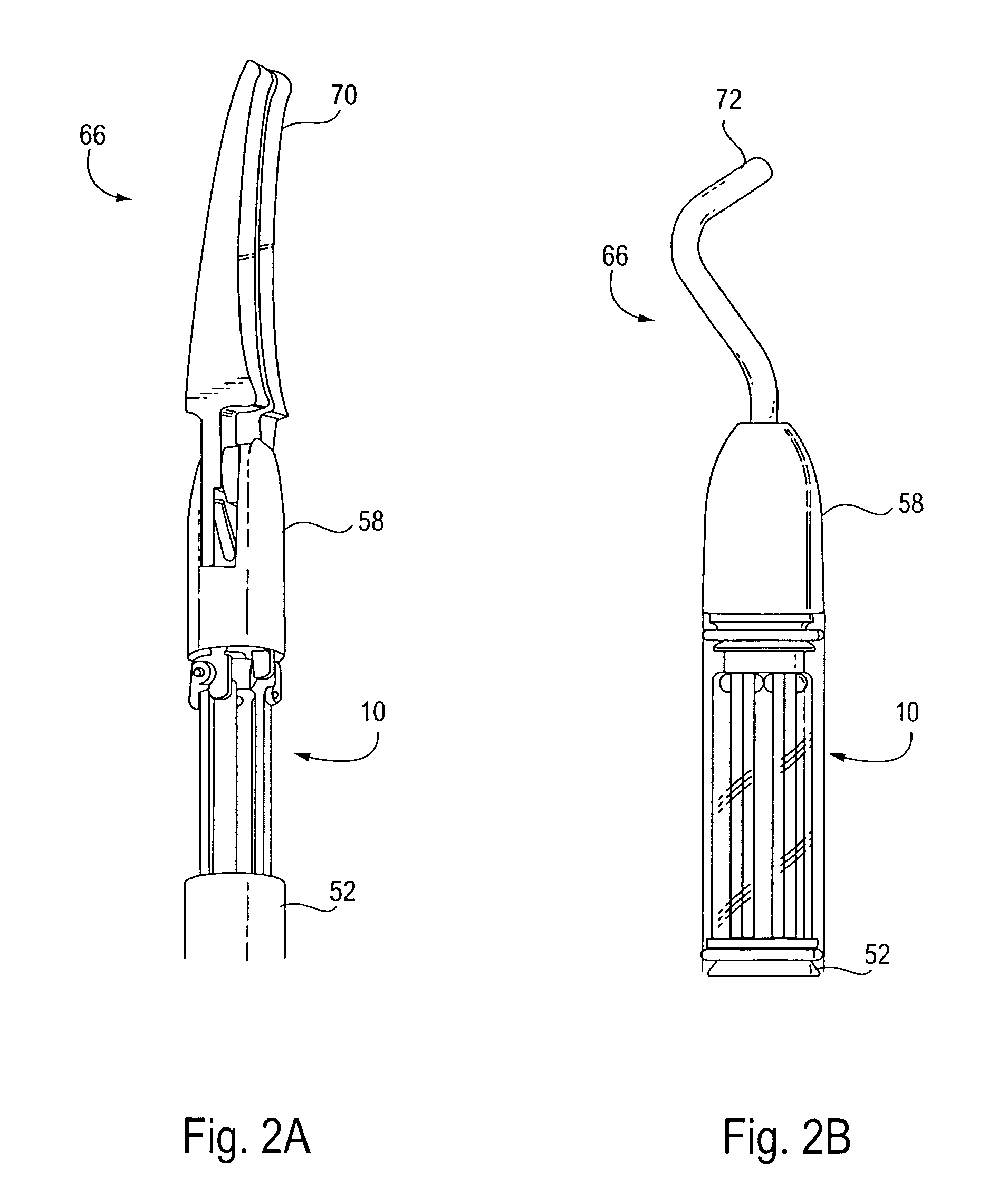Platform link wrist mechanism
- Summary
- Abstract
- Description
- Claims
- Application Information
AI Technical Summary
Benefits of technology
Problems solved by technology
Method used
Image
Examples
Embodiment Construction
[0061]FIG. 1 illustrates a surgical tool 50 of the present invention which is used in robotic surgery systems. The surgical tool 50 includes a rigid shaft 52 having a proximal end 54, a distal end 56 and a longitudinal axis therebetween. The proximal end 54 is coupled to a tool base 62. The tool base 62 includes an interface 64 which mechanically and electrically couples the tool 50 to a manipulator on the robotic arm cart. A distal member, in this embodiment a distal clevis 58, is coupled to shaft 52 by a wrist joint or wrist mechanism 10, the wrist mechanism 10 providing the distal clevis 58 with at least 1 degree of freedom and ideally providing at least 3 degrees of freedom. The distal clevis 58 supports a surgical end effector 66, the actual working part that is manipulable for effecting a predetermined treatment of a target tissue. Exemplary surgical end effectors 66 are illustrated in FIGS. 2A–2B. Grasping jaws 70 are illustrated in FIG. 2A, while a cautery isolation effector...
PUM
 Login to View More
Login to View More Abstract
Description
Claims
Application Information
 Login to View More
Login to View More - R&D
- Intellectual Property
- Life Sciences
- Materials
- Tech Scout
- Unparalleled Data Quality
- Higher Quality Content
- 60% Fewer Hallucinations
Browse by: Latest US Patents, China's latest patents, Technical Efficacy Thesaurus, Application Domain, Technology Topic, Popular Technical Reports.
© 2025 PatSnap. All rights reserved.Legal|Privacy policy|Modern Slavery Act Transparency Statement|Sitemap|About US| Contact US: help@patsnap.com



